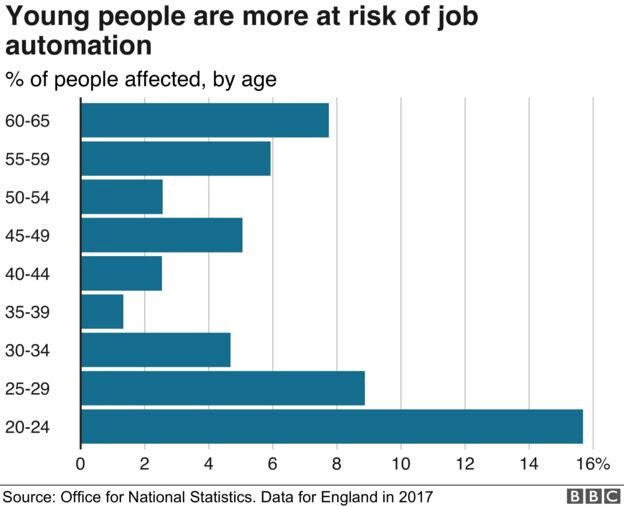The Age of Content Creation
Why documenting your learning in public is powerful.
Disclaimer, NFA, all that legal stuff: All the information presented in this publication and its affiliates is strictly for educational purposes only. It should not be construed or taken as financial, legal, investment, or any other form of advice.
Hi folks 🙋🏻♂️,
Today’s issue is a piece that I wrote in mid-2020, which means that 90% of you haven’t seen it. It also explains why I’m starting a different newsletter (which is the “sponsor” below). Now I’m no big shot content creator but in 1.5 months, it almost eclipses this publication, so please give it a shot :)
This publication will still continue and serve as a personal thought dump of mine. Maybe in the future, I’ll merge both publications, but for now, I want to say thank you for staying along and giving me your precious time and attention. Much love.
We’ll be back with regularly scheduled programming, next week 📺
Today’s issue is brought to you by Chain Catalyst
Chain Catalyst is the best newsletter for web3 builders and investors 📰
Discover the next best web3 products, strategies, and trends - in just 5 minutes. You’ll be receiving the following, on top of a succinct coverage of news that matters.
Monday - charts of the week, product launches
Wednesday - case study, features & governance update
Friday - investor-builders highlight, funding update
I help write these issues 3x a week. If you want my quick thoughts on breaking crypto news. Please consider subscribing :)
👉 CLICK HERE to read the latest issue
Why we’re all content creators
Gary Vee once said that every company in this digital age is a media-first company.
What does that mean?
In 2020, there is one profession that all of us are participating in whether we realize it or not. That profession is content creation. From a consulting company that publishes industry reports to a CPG firm that sponsors Youtubers to showcase their products, every successful company in this modern age understands the importance of brand awareness and the machines behind it — content creation. Doesn’t matter what industry the company is in, Coca-Cola, McKinsey, or Fidelity, every single one of them is a media company first before they’re beverage, consulting, and financial respectively.
For young professionals, this concept of content creation applies directly to our professional lives. It is not just Instagram and TikTok anymore, but also Twitter and LinkedIn. Think about it this way — some people try really hard to portray a perfect life on their Instagram profiles, showcasing only the positive side of our daily lives in order to signal to our friends: “Hey I’m cool and you want to hang out with me”
All that is not wrong as it’s just a part of human nature. Now imagine the same concept being applied to your professional lives through LinkedIn and Twitter. Replace the beautiful photos at Bali with personal industry-specific projects and the Instagram story partying at Omnia with Twitter threads related to your profession. The result: replace the clout that you’ll get amongst your friends/acquaintances with the personal brand growth that you’ll get from your respective industry participants.

Young, Wild, and Free
Personal branding is more important than ever. I hate the term, it feels inauthentic and smells like snake oil marketing, but I digress. Regardless, it is now more important than ever for young professionals to share, showcase, and present what they know in order to stand out amongst competitors. Corporate careers are getting more selective each year. The number of college graduates consistently increases; at the same time, automation is putting younger people at higher risks of losing their job to technologies, primarily because of the relatively “mundane” tasks given to younger professionals.


This means that in order to stand out, young professionals need to do more than simply learn the skills that are sought after by companies. It is on us to ensure that our thoughts, work, and presence are heard by the people in our industry. Content creation provides us with a platform to showcase our subject matter expertise, no matter what the level is. A common mistake that young professionals often make is being afraid to share our thoughts because we feel that we’re not “senior enough”.
Pay attention to the word that I used. Thoughts.
The key here is not to become a try-hard and explain materials that are way over our heads, faking our knowledge of the subject matter. What’s important is to understand that we’re also still learning, and every piece of content is meant to be thoughts or observations, acting as a medium for us to share our learning experience.
Platforms to Use
Just like business acumen, it’s important to also have social and cultural acumen in order to accurately select the best medium and types of content for your industry. For most people, written and audio content through LinkedIn, Twitter, and podcasting are going to be the best avenues. Granted, if you’re working in an industry that’s more creative-oriented, video/image content through Youtube and Instagram will be the better choice.
Podcasting — Spotify, Anchor, Apple Podcast, etc.
Podcasting really blew up in the last three years, and it is still a relatively small industry despite Joe Rogan’s $200M deal with Spotify. Part of the reason that it became successful is the niche that it carves and the passive yet intimate form of consumption that can be delivered through audio format. Podcast listeners typically lean towards young adults, meaning they’re prime targets to market to. Unfortunately, kids and teenagers just don’t have the concentration capacity to be interested in something that doesn’t have visuals or is longer than fifteen seconds.
As a result, the majority of podcasts are more serious and geared towards “knowledge seekers” types of individuals. Just look at the top 100 US Podcasts based on Apple Podcasts Top Charts. The majority are about journalism, business, life, politics, personal growth, and so on. This converts into a very lucrative CPM despite the lower number of views/listeners compared to Youtube videos and other video-form content. Podcasters generally make between $25–40 per 1000 listeners from advertisers, with the 2019 average being $18 per 1000 listeners. Shelby Church made a really informative video that breaks down how podcasting revenue works. For a relatively newer podcast with 1,000–3,000 listeners per episode, it can generate around $100 of revenue per episode.
Of course, when personal branding is the goal, monetization is not a priority. But the aforementioned niche in podcasting and the potential side income is a wonderful combination that young professionals really should start looking into if they want to get their names out there.
If you enjoy this piece so far, kindly give me a follow on Twitter below for more quick takes on the crypto market.
Until next time,
Marco M.
Written — Substack, LinkedIn, Twitter, etc.
Written content is probably the oldest form of content creation. From the age of Friendster, people already started publishing written materials online for others to see. However, its popularity as a means of personal branding has been enhanced in the past 3 years because of LinkedIn's rise to popularity, Twitter's utility as a public forum, and the emergence of platforms such as Medium and Substack.
For personal branding, publishing our work and personal projects on LinkedIn will be the most obvious move, but you might be leaving a lot on the table. Certain industries such as capital markets have a really active twitter-sphere and a lot of knowledge is being exchanged by notable individuals on the platform. This ranges from funny banter to actual discussions about the Fed’s latest monetary policy, being delivered to you faster and more nuanced than your typical news articles. By being a part of the conversation on LinkedIn/Twitter, one can increase his/her exposure in the respective industry.
Medium and Substack are relatively undiscovered by nonwriters. The former is a blogging platform that is often utilized by business people, especially in the startup ecosystem; and the latter is a platform that enables writers to create paid newsletters with just a few clicks. Similar to the podcasting logic, a young professional can kill two birds with one stone by creating written content on any of these platforms, and then reformating those content to better fit LinkedIn and Twitter in order to further amplify the reach. Again, monetization is not a priority here, but let’s take a look at the top 10 paid newsletters on Substack just for fun.
Old data as of September 2020

As young professionals, content creation can actually provide us with multiple benefits in the form of monetary income and personal brand awareness. I believe that a good start is treating it like a personal project whenever you want to communicate or explain something to your friends. Having conversations about a topic that you’re genuinely interested in will not feel like a chore; and slowly but surely, you can set personal goals and systems for your content creation strategy in order to achieve consistency. At the end of the day, content creation is at the center of every business — and we often forget that in professional settings, our own self is also a business.
Until next time,
Marco M.



